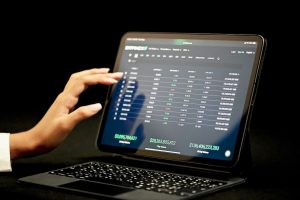Futures and forex are two popular financial instruments that are traded in the global financial markets. Both markets involve buying and selling assets, such as currencies, commodities, and indices, with the aim of making a profit. However, there are key differences between the two markets, including how the prices are quoted. In this article, we will explore why futures quote differently than forex quote.
Futures contracts are agreements to buy or sell a specific asset at a predetermined price and date in the future. These contracts are traded on futures exchanges, such as the Chicago Mercantile Exchange (CME) and the Intercontinental Exchange (ICE). Futures contracts are standardized, which means that the underlying asset, contract size, and delivery date are predetermined. For example, a corn futures contract traded on the CME has a contract size of 5,000 bushels and a delivery date of a specific month.
The price of a futures contract is quoted as the price per unit of the underlying asset, for example, the price of a corn futures contract is quoted as the price per bushel. Futures prices are determined by supply and demand factors, including the current and expected future supply and demand of the underlying asset. Futures prices are also influenced by factors such as weather conditions, geopolitical events, and economic indicators.
Forex, on the other hand, refers to the trading of currencies in the global foreign exchange market. The forex market is decentralized, which means that there is no central exchange where currencies are traded. Instead, forex trading takes place over-the-counter (OTC) through a network of banks, brokers, and other financial institutions. The forex market operates 24 hours a day, five days a week, and is the largest financial market in the world.
The price of a currency pair in forex trading is quoted as the exchange rate between two currencies. For example, the exchange rate between the US dollar and the euro is quoted as USD/EUR, with the price indicating how many euros can be obtained for one US dollar. Forex prices are determined by supply and demand factors, including interest rates, economic indicators, political events, and market sentiment.
One key difference between futures and forex prices is how they are quoted. Futures prices are quoted as the price per unit of the underlying asset, while forex prices are quoted as the exchange rate between two currencies. This means that the units of measurement for futures and forex prices are different. Futures prices are quoted in units of the underlying asset, such as bushels, barrels, or ounces, while forex prices are quoted in units of currency, such as US dollars, euros, or Japanese yen.
Another difference between futures and forex prices is the way they are traded. Futures contracts are traded on exchanges, where buyers and sellers meet to trade standardized contracts. Trading in futures contracts involves a high level of leverage, which means that traders can trade large positions with a relatively small amount of capital. Forex, on the other hand, is traded over-the-counter, which means that traders can trade directly with each other without the need for an exchange. Forex trading also involves a high level of leverage, which means that traders can trade large positions with a relatively small amount of capital.
In conclusion, there are key differences between futures and forex prices. Futures prices are quoted as the price per unit of the underlying asset, while forex prices are quoted as the exchange rate between two currencies. Futures contracts are traded on exchanges, while forex is traded over-the-counter. The units of measurement for futures and forex prices are different, with futures prices quoted in units of the underlying asset and forex prices quoted in units of currency. Understanding these differences is important for traders who want to trade futures or forex, as it can affect their trading strategies and risk management.






